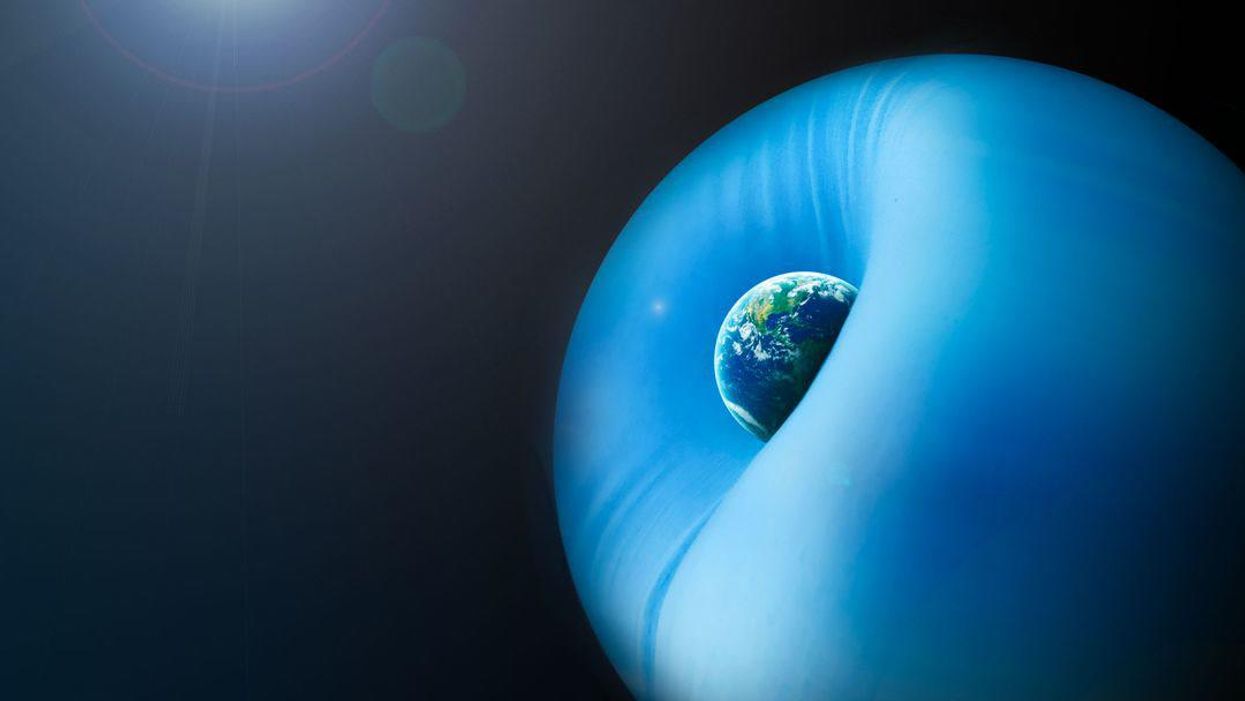Sinead Butler
Jun 01, 2022
What If Uranus Collided With Earth?
Backyard Media
When we look at the distant planets of Neptune and Uranus, there are a lot of similarities in terms of size, mass and atmospheric structure.
However their colour is a distinctive difference - while Neptune is a deep blue, the colour of Uranus is a much lighter, paler blue.
But why is this?
Well, new research has answered this question as it is believed this difference in colour is a result of a concentrated layer of haze that covers the two planets.
Sign up to our free Indy100 weekly newsletter
The haze is thicker on Uranus than it is on Neptune, hence Uranus's paler colour - and if there were no layers of haze on either of the planets then according to this study published in the Journal of Geophysical Research: Planets, both planets would appear almost the same blue colour.
Professor Patrick Irwin, lead author of the study at Oxford University said: "This is the first model to simultaneously fit observations of reflected sunlight from ultraviolet to near-infrared wavelengths.
"It’s also the first to explain the difference in visible colour between Uranus and Neptune."
An international research team found observations through Hubble Space Telescope, the NASA Infrared Telescope Facility and the Gemini North Telescope and created a model to provide detail on the aerosol layers on the atmospheres of Neptune and Uranus.
\u201c1/ Using observations from the @HUBBLE_space , as well as @GeminiObs & the NASA Infrared Telescope Facility, researchers explain why Uranus and Neptune are different colours \ud83d\udd17 https://t.co/FyHC9uNlFl\u201d— HUBBLE (@HUBBLE) 1654009385
In this model, there are three haze layers at different levels of heights in both the planet's atmospheres and it is the middle layer that researchers found to be thicker in Uranus's atmosphere than Neptune's and this is the reason behind the difference in colour.
On both planets, methane ice condenses onto the particles in this layer, pulling the particles deeper into the atmosphere in a shower of methane snow.
As Neptune has a more "active" atmosphere, the planet is "more efficient in churning methane particles into the haze layer and producing this snow," according to NASA, hence Neptune's layer is thinner.
Meanwhile, on Uranus excess haze builds up in the planet’s stagnant, sluggish atmosphere and has a thicker layer and appears lighter in colour.
Dr Mike Wong, an astronomer at the University of California, Berkeley, and a team member in this study described the surprise in discovering the reason behind Neptune's and Uranus's difference in colour during their research.
"We hoped that developing this model would help us understand clouds and hazes in the ice giant atmospheres," he said.
"Explaining the difference in colour between Uranus and Neptune was an unexpected bonus."
Have your say in our news democracy. Click the upvote icon at the top of the page to help raise this article through the indy100 rankings.
Top 100
The Conversation (0)














